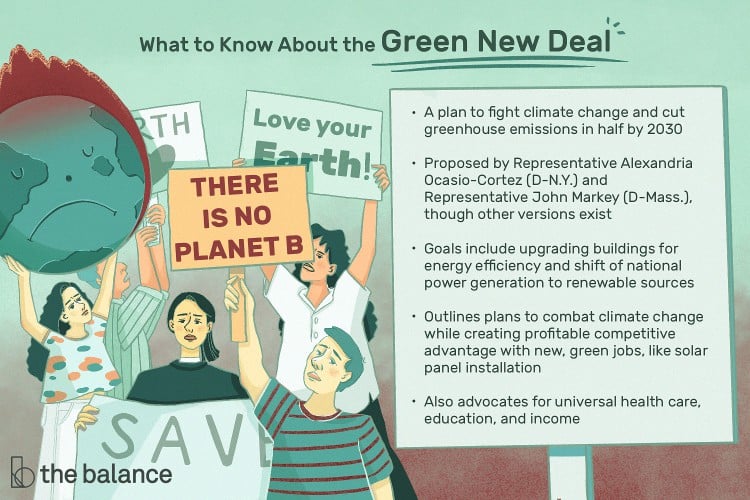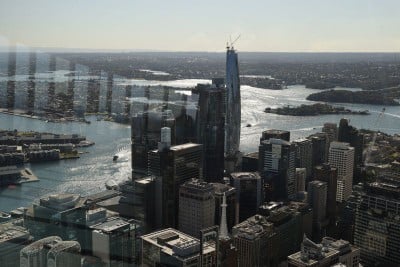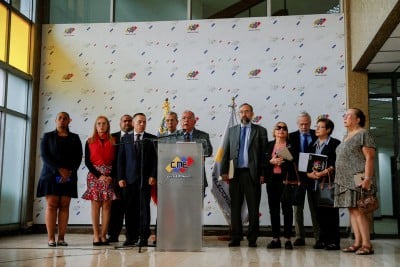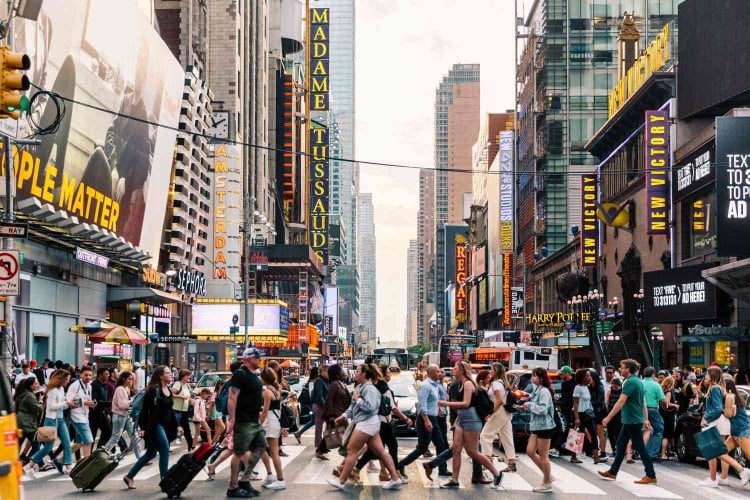
The Balance / Julie Bang
The Green New Deal is a plan to fight climate change. It would reduce greenhouse gas emissions, cutting them 71% by 2030. This is in line with the 50% reduction it would take to limit global warming to less than 2.7 degrees Fahrenheit by 2100. It's the Paris Agreement’s most ambitious climate goal.
To achieve its goal, the plan calls for the United States to switch to 100% renewable energy by 2030. As of 2019, only 11% of the nation's energy consumption came from renewables, according to the Energy Information Administration. Another 8% was generated by nuclear power. Although it's not renewable, it also doesn't emit carbon dioxide.
At its core is the recognition that the oil and carbon-based energy system must be changed to reduce further emissions. Technology must be introduced to absorb existing CO2 levels. Otherwise, scientists warn temperatures could exceed a tipping point that leads to hothouse earth.
The name reflects President Franklin D. Roosevelt's national New Deal effort to combat the Great Depression. It created programs to create jobs, support farmers, and boost manufacturing.
Details of the Plan
On Feb. 7, 2019, Representative Alexandria Ocasio-Cortez (D-N.Y.), and Representative Edward Markey (D-Mass.), introduced a five-page nonbinding resolution to the House. One hundred and one House members endorsed the plan. So did all six Senate Democrats running for president. That ensures that solutions to climate change will be a major issue in 2020.
It includes seven goals previously introduced by Ocasio-Cortez:
- Shift 100% of national power generation to renewable sources.
- Build a national energy-efficient "smart" grid.
- Upgrade all buildings to become energy efficient.
- Decarbonize manufacturing and agricultural industries.
- Decarbonize, repair, and upgrade the nation's infrastructure, especially transportation.
- Fund massive investment in the drawdown and capture of greenhouse gases.
- Adopting these goals would make "green" technology, industry, expertise, products, and services a major U.S. export. As a result, America could become an international leader in helping other countries transition to completely carbon-neutral economies.
The resolution also requires that any new infrastructure spending must address climate change. It wants the government to push for more zero-emissions vehicles and invest in high-speed rail and other public transit.
Note
The Green New Deal adds some goals to address income inequality. The effects of climate change are worse on low-income people. For example, droughts raise food prices. Low-income households spend a greater percentage of their earnings on food and can least afford higher prices.
The Green New Deal's Economic Impact
Businesses can create a profitable competitive advantage by adopting Green New Deal goals. States, like California and Hawaii, have already set goals to become carbon-free. Nations are seeking to meet their goals under the Paris Climate Accord. So have 20 states and 110 major cities, as of 2017. As the price for wind energy and solar power falls, companies that source renewable energy may be ahead of those that don't.
The Green New Deal funds new jobs, including installing solar panels, retrofitting coastal infrastructure, and manufacturing electric vehicles. It asks for new trade rules to stop "the transfer of jobs and pollution overseas."
It could make universal health care available. It also advocates a universal basic income. This is a government guarantee that each citizen receives a minimum income. It pays enough to cover the cost of living.
Surprisingly, the Green New Deal does not include a carbon tax or a cap and trade program. These programs raise the cost of carbon fuels, like gasoline. That could hurt lower-income families more, especially those in rural areas who rely on an automobile. It was one reason the "yellow vest" protesters in France opposed a gas tax. They felt it was another sign that the very wealthy ignored their needs.
It also does not ban fossil fuels. Similarly, it doesn't exclude nuclear energy and hydropower which are often opposed by environmental groups.
Why the Green New Deal Is Needed
In October 2018, the United Nations international climate science panel released an alarming report. It found that the effects of global warming could become irreversible by 2030 without rapid action. The West Antarctic ice sheet could melt, raising sea levels another 4 inches. Without the ice sheet to reflect the sun's rays, oceans would absorb even more heat. That would melt more ice, worsening the heating cycle.
At least 100 million people would die from increased heat waves, drought, and infectious diseases. The heat would also kill off 90% of the world's coral reefs.
Note
To avoid this fate, the UN report said the world must cut greenhouse gases by almost half by 2030. To stop further warming, greenhouse gases must be reduced to 350 parts per million. Carbon dioxide levels are already above 400 parts per million.
Since the 1880s, the earth’s average temperature has risen around 2.1 Fahrenheit. That's 1.2 degrees Celsius. Warming is occurring at a faster rate than at any other time in the Earth's recorded history.
Ocasio-Cortez made the New Green Deal a cornerstone of her 2018 campaign. At a town hall, she said, “This is going to be the New Deal, the Great Society, the moon shot, the civil-rights movement of our generation."
On March 26, 2019, the Senate voted against a new bill from December 2018. Republicans planned to use the vote to accuse Democrats who voted for the bill as unrealistic socialists. Three Democrats in moderate states voted against the bill. All other Senate Democrats voted "present" to avoid an intraparty fight. According to The Washington Post, Democrats said the vote was a sham since there were no hearings or expert testimony. Some Republicans are drafting their own proposals but the Republican party does not have a plan to stop global warming.
In March 2019, House Democrats announced plans to draft a bill requiring the United States to live up to its commitment under the Paris Climate Accord. It also announced a committee to report on the economic and national security consequences of Congressional failure to do something about climate change.
In April 2019, Ocasio-Cortez released a video that added details to a Green New Deal proposal. She advocated national high-speed trains, restored wetlands, and universal health care.
New Versions of the Green New Deal
The popularity of the Green New Deal has sparked other versions. New York's Governor Andrew Cuomo announced a Green New Deal for the state's 2019 executive budget. It would make electric generation carbon-free by 2040 and create a council to do the same for the state's entire economy. Critics prefer the Climate and Community Protection Act which wants the entire state to be carbon neutral by 2050. It also allocates funds for low-income communities that suffer the most from climate change.
Former 2020 presidential candidate Beto O'Rourke launched a Green New Deal as part of his campaign. He would have spent $5 trillion over 10 years to build infrastructure. He wanted a federal law to make the United State have zero carbon emissions by 2050. He wanted to fund communities hit by wildfires, floods, droughts and hurricanes. He proposed regulations to reduce methane leakage from the oil industry, reduce hazardous waste from power plants, and raise fuel-economy standards.
Another former 2020 candidate, Washington State Governor Jay Inslee, ran solely on climate change. Inslee's Green New Deal promoted national net-0 climate pollution by 2045. He wanted the U.S. energy grid to be 100% "clean energy" and all buildings, industries and transportation to transition to renewable sources.
The Los Angeles Green New Deal will achieve zero carbon emissions in electricity, transportation, and buildings by 2050. The Mayor's plan also pledges zero waste and no wasted water.
History of the Green New Deal
The Green New Deal was first introduced in 2016 by Jill Stein, the candidate for the Green Party. It committed to 100% renewable energy by 2030, costing $200 billion per year. It would create a Renewable Energy Administration to create up to 20 million new green-centered jobs. That would cost $400 billion a year. It also included free education through college.
It paid for these programs in three ways. First, by cutting the defense budget by 50%. Estimated U.S. military spending is $934 billion for 2021. Second, it advocates a $60 per ton carbon fee, generating $360 billion a year. More progressive taxation on the super wealthy would raise $130 billion annually.
The research group Data for Progress also outlines a Green New Deal. It is broad in scope yet detailed. It includes clean air and water, reforestation and wetlands restoration, and zero waste by 2040. It would create 10 million new private and public sector jobs. Its research shows that most Americans support the Green New Deal's jobs program.
In 2016, a bipartisan group of House members formed the Climate Solutions Caucus. The caucus is affiliated with the Citizens’ Climate Lobby, which supports a carbon fee. It has 72 members.
In 2011, the Environmental Protection Agency used its powers under the Clean Air Act to limit carbon as a pollutant. The Trump administration terminated the Clean Power Plan.
The Deal goes beyond the 2007 Select Committee on Energy Independence and Global Warming. Pelosi formed it when she was first elected speaker in 2007. Republicans eliminated it when they took the majority in 2011.
In 2009, the American Clean Energy and Security Act was approved by the House of Representatives. But the bill was never brought to the floor of the Republican-controlled Senate.
In 2005, the federal government mandated food-based biofuels. It raised food prices, causing riots in 2008. Ethanol and biodiesel seemed cleaner than fossil fuel, but their production destroyed ecosystems that absorbed carbon.
Supporters and Opponents
There are 111 members of Congress who co-sponsored the Green New Deal in the House following it's sponsor Rep. Ocasio-Cortez.
There are hundreds of groups that support the Green New Deal. One of the most visible is the Sunrise Movement. It focuses on stopping climate change. Another supporter is MN350, a Minnesota-based global movement aiming to spread awareness and education on climate change.
Republicans oppose the Green New Deal. For example, Sen. Cory Gardner, (R-Colo.), told POLITICO, “Green New Deal? Sounds like a lot of red ink.” Republicans will likely argue that it will increase the debt. But they have overseen growing deficits, some of which resulted from Trump's tax cut. There are even moderate Democrats who don't believe the plan is necessary.
Physicist Christopher Clack estimates constructing new generation would cost at least $2 trillion. Others warn that it would plunge the world into a second Great Depression.
Other opponents accuse the Green New Deal of ushering in socialism because it advocates universal education. Some warn that it wants to get rid of cows because they emit methane. Still, others conclude that the plan will end auto and air travel because of CO2 emissions.






